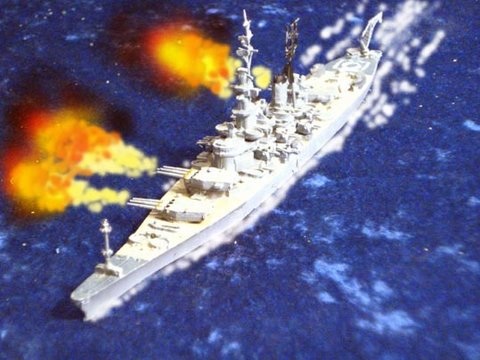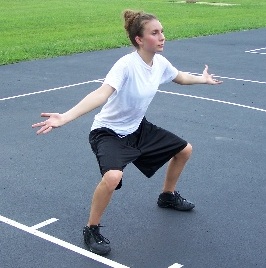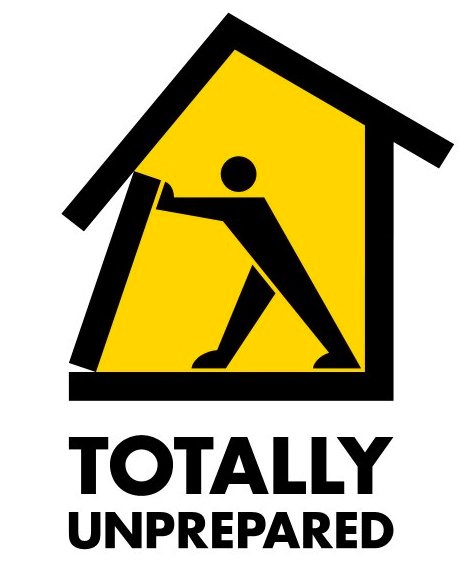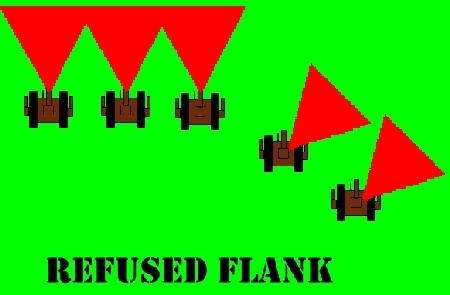40k Editorial – Your Basic Defense…

Hi everyone… it’s your neighborhood Black Blow Fly here again. I’d like to address what I consider to be one of the most basic tenents to playing competitive 40k… Your basic defense can win you games on a consistent basis.
Of course you need to understand what is a defense. Defense is the act of resisting an attack. It’s just that simple too.
This is a long article so pull up a chair and sit awhile if you want to absorb it in its entirety.
So why am I writing this article…
It seems there were many daemon armies at Feast of Blades (FoB) in Colorado. It also looks like for the most part the majority came with pretty much the same build spamming lots and lots of flamers and screamers. It is nothing new as far as spam goes – the only difference is now Tzneetch finally got a little loving from GW. This seems to be a regional meta in my opinion which I think is important to note.
Probably these players designed their lists to optimize them for the event’s rules interpretations regarding flamers and screamers – they basically got all the good stuff from both sets of rules:
Chaos Daemon codex –
• Eternal Warrior
• Fearless
WD booklet –
• 5++ invulnerable save
Many have recently stated this is a broken combination. In truth the daemon codex is just plain hard to write. You are going to end up with either some weak sauce or something pretty darn potent simply due to the very background of daemons. Remember all the 40k Internet pundits that claimed daemons are the weak sauce ? You should.
If you look at the results from other major events that have used 6th edition none of them saw daemons so heavily favored and I doubt the next major event will again. If the majority of the competitive players are basically bringing one specific type of build then it’s bound to do well. Don’t you find it ironic that none of these armies featured any allied detachments?
I have been told that the scoring system in Denver heavily favored the flamer-screamer daemon build as tabling your opponents racked up lots of battle points. I prefer the W/L format over Margin of Victory for just this type of reason since it helps curb the abuse of spam. Basically each event is going to favor certain types of armies over others just due to how the players score points. A well designed balanced list in the hands of a good general should always stand a fair chance to do well regardless of the system.
I find it very interesting that GW just updated the Daemon FAQ immediately following FoB. This is the only change:
Q: Do models chosen from Codex Chaos Daemons and/or the White Dwarf, August 2012, Codex Chaos Daemons official update have the Daemon special rule from the Warhammer 40,000 Rulebook, or do they have the Daemon army special rule from Codex: Chaos Daemons? (see page 27)
A: All models from Codex Chaos Daemons and/or the White Dwarf, August 2012, Codex Daemons official update have the Daemon army special rule listed in Codex Chaos Daemons with the addition of the Fear special rule from the Warhammer 40,000 rulebook and a 5++ invulnerable save.
So lo and behold the FoB judges got it right and I tip my hat to them.
I find it very interesting that GW has released rules updates immediately following both NOVA and FoB. Their stated policy is they no longer care about competitive tournament play nor support it… But darn it sure seems like they are suddenly keeping a very close eye on it. I think that’s a great thing too – they let us know their position on controversial issues taking the proverbial bull by its horns.
While the Tzneetch daemon build is certainly one tough nut to crack it is by no means an auto-win army. We can drink the latent Internet cool aid, roll over and claim we are done OR we can put our mind to work and devise strategies and tactics to defeat these seemingly indefeasible armies. Daemons by their very nature are highly aggressive so developing defensive tactics can help us to overcome them. It is what it is.
Introduction
When I was growing up I played a lot of sports and tried my best to learn what tactics and strategies made for the best teams. I primarily studied basketball, football and soccer. There was a high school basketball coach from my home state that prided himself on defense and he won many state championships… What was very interesting to me was the fact this coach was from a relatively small town and consistently beat teams from much bigger cities. His basic tenent for success was as follows – your defense is always there while some times your offense will come and go. He had most of his plays designed around defense (obviously). Let them break apart upon the rocky shoals of our outer boundaries as they pound upon us one wave after another.
In terms of football I have often seen one particular style of play do very well – awesome defense coupled with a solid offensive line and a good ground game for offense (i.e., running game). These types of teams control the possession of the ball (usually 60% versus 40% or better), rarely turn the ball over and have few points scored against them. They can pass the ball well but prefer the run as the latter eats up the clock and plays right into their hands. The San Francisco 49ers currently epitomize this style of football now in my opinion and these types of teams often score directly on turn overs through their stout defense.
In terms of soccer I point directly to the Italian national team. They haven’t won a World Cup in quite some time but over the course of the World Cup they certainly have won more than their fair share of titles – I believe that only Brazil has more. The Italians are well known for their multi layered defensive style… If they score the first goal you can bet there will all eleven players inside their penalty box booting the ball as far down the field as possible time and time again. It’s boring but it works… And what is good for the goose is good for the gander if you catch my drift.
Defense as applied to 40k
While you can’t win a championship on defense alone it sure can be quite powerful. In the realm of professional sports typically the teams with the top defenses often tend to do the best and in my mind in terms of 40k it can produce consistent winning results.
Of all the armies I’ve ever played the most challenging for me was Dark Eldar… They can hit like a ton of bricks but also quickly wither on the proverbial vine if left out to dry. Dark Eldar by their very nature have little in the way of defense and I prefer armies that can absorb a lot more punishment and dish it out in return. I was a huge advocate of Tyranids in 5th edition and one of the main reasons is that that they can handle incoming enemy fire power a lot better in my mind than say the Dark Kin. Space Marines in general have their 3+ armor save which is one of their best attributes (and is often overlooked – believe it or not).
If you want to be a competitive player then you’ve got to have a game plan. You shouldn’t expect to show up to most any game with a hastily designed army and expect to roll through one opponent after another. A big part of bringing a strong list is to have play tested it extensively – you are intimately familiar with its strengths and weaknesses… So you know how to exploit its strengths while at the same time minimizing it’s weaknesses.
Another basic philosophy is a good offense is a good defense and this goes right back to what I said earlier in regards to the 49ers as they do so by controlling the ball more than their opponents. Sure they might seem to struggle when the opposing team goes ahead to grab a significant advantage points wise since by the very nature of their intrinsic game they are not as accustomed to this type of situation. Using your offense to generate your defense is an advanced strategy but I find some players do it without even realizing it for what it is.
As a 40k player I want to grab the objectives prior to my opponent but I have a set of very basic strategies built into my game plan so that I can adapt to most any unfortunate set of circumstances. Running a successful offense can be heavily dependent upon the luck of the dice – for example if you can’t roll to hit on a consistent basis in a one off game you can still offset this unforgiving metric simply by bringing a solid well thought out defense to the table (and tends to be much less dependent upon the dice).
Specific Examples for 40k
I’ve talked at length in general about the strength of your defense, citing some examples from popular sports to build my case. I would like to now provide some simple examples to better illustrate my case. Two strategies that quickly come to mind is the castle deployment and denying the refused flank.
The Castle
This strategy hinges upon deploying all your units close together so they can support each other. This is my tried and true method to defeat dark eldar – it’s also known simply as circling your wagons. Dark Eldar are highly mobile and are designed to win by dividing and conquering the enemy.
The last thing any Dark Eldar player wants to see is a castle… It’s their worst nightmare come true! Daemons though on the other hand love to see their opponents deploy as such – everything is clustered nicely together… The raw meat goes into one end of the meat grinder and comes right out the other end entirely shredded. The main point here being one type of defense does not equally apply to all armies. You must adapt.
Denying the Refused Flank
The Oblique Order (…or refused flank) is a military tactic whereby an attacking army focuses its forces to attack a single enemy flank. The force commander concentrates the majority of his strength on one flank and uses the remainder to fix the enemy line. This allows a commander with weaker or equal forces to achieve a local superiority in numbers. The commander can then… defeat the enemy in detail… Oblique order required disciplined troops able to execute complex maneuvers in varied circumstances.
Source – http://en.wikipedia.org/wiki/Oblique_order
If you stop to think about it this is the manner in which Chaos daemons most often attack other armies… The meat grinder starts at one end of the enemy line and works it way through to the other running everything through their big shredder.
How do we deny this type of attack? It’s simple – spread out your forces so that you offer no flank to attack. Mobility is a key to this type of defense as you want to be able to quickly redeploy your units so that the daemons are time and time again left standing on their hooves. As a direct result the daemon player will typically over extend their units leaving open to quick counter attacks. Basically you’re turning the table on your daemonic foe. Heh ! If well executed what starts off as a stiff defense evolves into a powerful offense.
In Closing
I’ve focused first on why I think daemons overall did so well at FoB. Next I touched on certain types of physical sports that employ defense as a key to victory. I also briefly touched on what makes daemons so darn nasty. I then closed citing two types of simple defensive tactics you can employ to defeat aggressive armies. Remember that defensive armies score by using well timed counter attacks executed when the enemy is the most exposed.
There will always be some over the top offensive minded armies. By denying their attacks we can prevail time and time again. The best armies have defensive mechanisms to call upon while marshaling their forces – this goes hand in hand with designing a balanced army and they are less dependent upon the luck of the dice. Let’s face the facts… If you find yourself time and time again relying upon luck to win then most likely you probably don’t have much a real game plan.
So do you ever find yourself thinking about how you will setup your defense when you play a game of 40k? If so what do you commonly consider?







